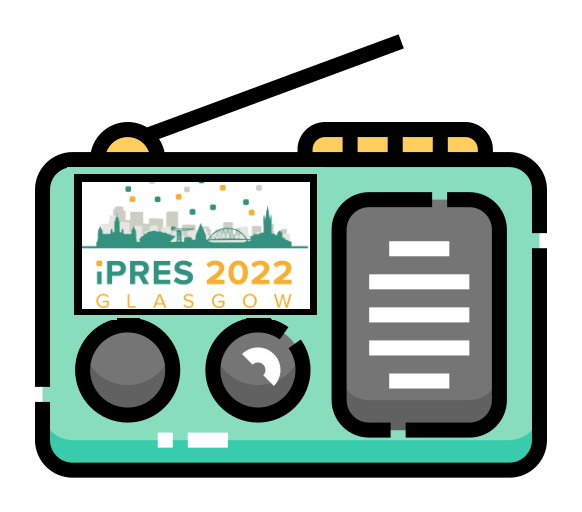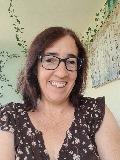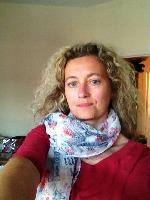Blog
Unless otherwise stated, content is shared under CC-BY-NC Licence
iPRES 2022: Climate Change and Environmental Sustainability
Matthew Addis is Chief Technology Officer at Arkivum.
One area that stood out for me at iPRES this year was the thread of climate change and environmental sustainability that weaved its way through several parts of the conference.
In the panel session called ‘”IT'S ALL IMPORTANT OF COURSE, BUT…”, which hotly debated the question of what is the most important challenge in digital preservation (costs, advocacy, and people all came high up the list, and rightly so), I think it was Keith Pendergrass, one of the authors of a seminal report on the environmental sustainability of digital preservation, who made the observation from the audience that “how to ensure content is sustained through climate collapse is perhaps the biggest challenge for preservation”. This struck me as particularly relevant given other sessions at iPRES had talked about grass-roots collecting and archives, including in local communities and in developing countries. It won’t be content in the national libraries that will be lost, but content in small archives like these that are hit with increasingly extreme climate events that literally destroy their very existence.
DCDC 2022 - Inclusive, Diverse, Collections for the Future - now!
Adrian Clark is Academic Librarian for the Wolfson School of Engineering at Loughborough University. He attended DCDC 2022 with the support of the DPC Career Development Fund, which is funded by DPC Supporters.
I am the Academic Librarian for the Wolfson School of Engineering at Loughborough University. My interests are in research support and how data archiving and preservation underpins the scholarly record and can create new research opportunities. Having worked in the cultural and heritage sector previously as well as my current role I was excited to listen to so many different perspectives at the 2022 Discovering Collections, Discovering Communities (DCDC 2022) conference this past July.
One of my first thoughts on looking at the conference programme was that: “I wish our archivist was here with me!” Loughborough is currently recruiting to replace our Archivist; the university archive records the organization's inception as The Loughborough Technical Institute in 1909 to its present structure as a world class university. Additionally, the library is currently revisioning its strategy. Two strands of that process Opening Up Research and Contributing Towards Knowledge Exchange, supplied a key reason for attending DCDC 2022. I was hoping to identify potential partners to help us tell the story of our institution better and to figure out if we could do things differently when it comes to collection curation. I wasn’t disappointed! Below I have brought together the themes of several of the talks that I attended and the learning they prompted.
Reach Out I’ll Be There – World Mental Health Day 2022
After (non-Covid) illness and a holiday, today, 10th October, is my first proper day back “in the office” after iPres 2022. It seems fitting that the day is also World Mental Health Day 2022, marking a day of action and reflection on a topic that is very important to me. I’ve blogged before on my own mental health struggles and the impact that the start of the pandemic had on me, and this seems like the ideal time to revisit the topic of mental health.
My iPres: some personal highlights
Ever since returning from Glasgow last month I have been meaning to get my thoughts down on my own iPres experiences. Writing this post has been a good way for me to organise my own thoughts and learnings from the conference and also a good excuse to dip into some of the written proposals and presentation recordings, but I think the time spent has been worth it. This is an account of how iPres was for me!
Digital Preservation frameworks, strategies and policies
Robin Wright is Head of Australasia and Asia-Pacific for the DPC
In August earlier this year Australasia Preserves, a Community of Practice that supports the discussion of digital preservation in Australasia, collaborated with National and State Libraries Australasia to hold an online meetup session exploring Digital preservation frameworks, strategies, and policies.
Community and sustainability
Rachel MacGregor is Digital Preservation Officer at the University of Warwick
I’m writing this with the stardust of iPres 2022 still glinting on me and reflecting back on everything I did and everything I learnt at the conference. Everyone has a different conference – this one was no exception - and the packed programme meant that there was always going to be lots of stuff I will never catch up (although a great deal was recorded). You can read William’s blog about the organisation (which was amazing) – all I am aiming to do is to share some of my highlights and what I plan to do next with what I have learnt.
iPres radio at iPres 2022 in Glasgow
 Robin Wright is Head of Australasia and Asia-Pacific for the DPC
Robin Wright is Head of Australasia and Asia-Pacific for the DPC
During iPres this year, online delegates from Australasia and the Asia-Pacific had an additional way to engage with the iPres program and other attendees from their region by tuning in to iPres radio. This was a series of five half hour open zoom sessions run by the DPC’s Head Australasia and Asia-Pacific each day at 14:00 AEST (12:00 SGT, 16:00 NZST) that was designed for online delegates from the Australasia and Asia-Pacific region.
It provided an informal forum for delegates from the region allowing them to interact and find out more information about events at iPres at a convenient local time. The sessions also provided an introduction to the iPres Sunrise sessions being held later that day at 7.30am Glasgow time (16:30 – 18:00 AEST, 14:30 – 16:00 SGT, 18:30 – 20:00 NZST).
People Make iPres
In November 2011, the organizers of the annual fireworks display in the beautiful town of Oban got in a muddle. Instead of their show taking 20 minutes, the whole carefully choreographed lot went up in 45 seconds. It was all perfectly safe so the (surprisingly short) video of the event is one of the most stupendously silly things you will find on the internet today: chaotic, brief, stunning, colourful, intense, loud, joyful and somewhat predictably called the ‘Obang Fiasco’.
It’s a strange place to start a blog about iPres but it came to me while I was driving home from the conference on Friday. iPres 2022 started with an email exchange in the first week of March 2017: five and half years in planning and less than five days in delivery. I have common cause this week with the astonished audience of Obang. What on Earth has just happened?
A perpetual motion machine: The preserved digital scholarly record
A new paper in Learned Publishing by Tom Cramer (Stanford University Library), Chip German (University of Virginia Library), Neil Jefferies (Bodleian Libraries, University of Oxford) and Alicia Wise (CLOCKSS) looks at the intersection between the rapidly changing worlds of Digital Preservation and Scholarly Publishing.
Investigating podcast preservation at the University of Kent
Clair Waller is Digital Archivist at the University of Kent
Introduction
The University of Kent Archive (UKA) is the repository for records created by Kent’s central administration and other constituent parts of the University. It was established in the year of our 50th anniversary, 2015, and has been developing in terms of scope, practice, and content since then. The UKA holds collects and preserves content from across the university, including papers on foundation and establishment of the University, minutes of committees, printed material such as Annual Reviews, prospectuses, newsletters, photographs documenting staff, students and the campus, student generated content, and records of campus institutions, such as the Gulbenkian Theatre.





















































































































































